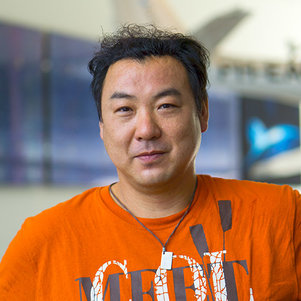A. Nagai (Atsushi)
Biography
Atsushi Nagai is a polymer chemist who obtained PhD at Yamagata University in 2005. After graduating, he worked as a postdoc at Carnegie Mellon University in the United States and he studied both atom transfer radical polymerization and click chemistry. He went back to Japan and studied novel thermostable polymers and novel living ring-opening polymerization systems as postdoctoral fellow at Kinki University and Kanagawa University in Japan. In 2007, he worked at EAMEX corporation to develop high performance polymer actuator materials. One year later, he was invited by Prof. Yoshiki Chujo at Kyoto University as postdoctoral fellow and was appointed an assistant professor to study boron-containing conjugated polymers. In 2010, he pursued his career at National Institute of National Sciences, Institute For Molecular Science (IMS) in Japan as an assistant professor and mainly focused his research on covalent organic frameworks. He also co-supervised many international students and postdoctoral fellows belonging to the Graduate University for Advanced Studies (Chemical, Optical Chemical, and Polymer Synthetic Project) at IMS. In 2014, he was invited as a visiting assistant professor at University of Texas Southwestern medical Center in the United States by Prof. Daniel J. Siegwart Labo to develop novel bioprobes by using organic and polymer synthetic techniques. He published 2 high quality papers during his research as visiting assistant professor for 10 month. In 2017, he was accepted as an associate professor at the Novel Aerospace Materials group at the TU Delft to lead the research on high performance polymeric materials. He will continue his research on organic porous materials (COFs) but will extend it in the direction of the but will extend it in the direction of the flexible design and application of COFs that are actually suitable to several fields such as catalyst, biology, electronics, environment, and so on. As his achievements Mid 2017 he has published 67 papers, 6 patents and 5 book chapters as well as a textbook; Conjugated Objects: Developments, Synthesis, and Applications that will be released later in 2017 by Stanford Publishing (Mid 2017 his worked received 2500 citations leading to a H-factor of 29).
Main research topics
His research interests are the synthesis and application of two- or three-dimensionally (2D or 3D) next-generation porous materials, so-called Conjugated Bonding-Organic Frameworks (CBOFs), which let covalent organic frameworks (COFs) give skeletons and properties of conjugated microporous polymers (CMPs).
1. Covalent Organic Frameworks (COFs)
COFs can be constructed by the reticular design of their components, which, upon undergoing condensation reactions, from a porous skeleton with a precise pore size and specific pore geometry. Therefore, especially, COFs are of great interest for nanopatterning, for organic electronic, as nanoreactors, and for immobilization of functional molecules in size-matched pores.
2. Conjugated Microporous Polymers (CMPs)
CMPs are also an emerging class of organic porous materials that combine p-conjugation structure with high surface area and permanent nanopore have attached much interest. The conjugated nature of CMPs was exploited to produce porous sensors, supercapacitors and photo-catalysts.
Awards
1. The Society of Polymer Science, Japan; Young Scientist Lecture Prize Award (2014)
Associate Professor

Dr. A. Nagai
- +31152784520
- A.Nagai@tudelft.nl
-
Faculty of Aerospace Engineering
Novel Aerospace Materials
Room: NB1.34
Kluyverweg 1
2629 HS Delft, The Netherlands